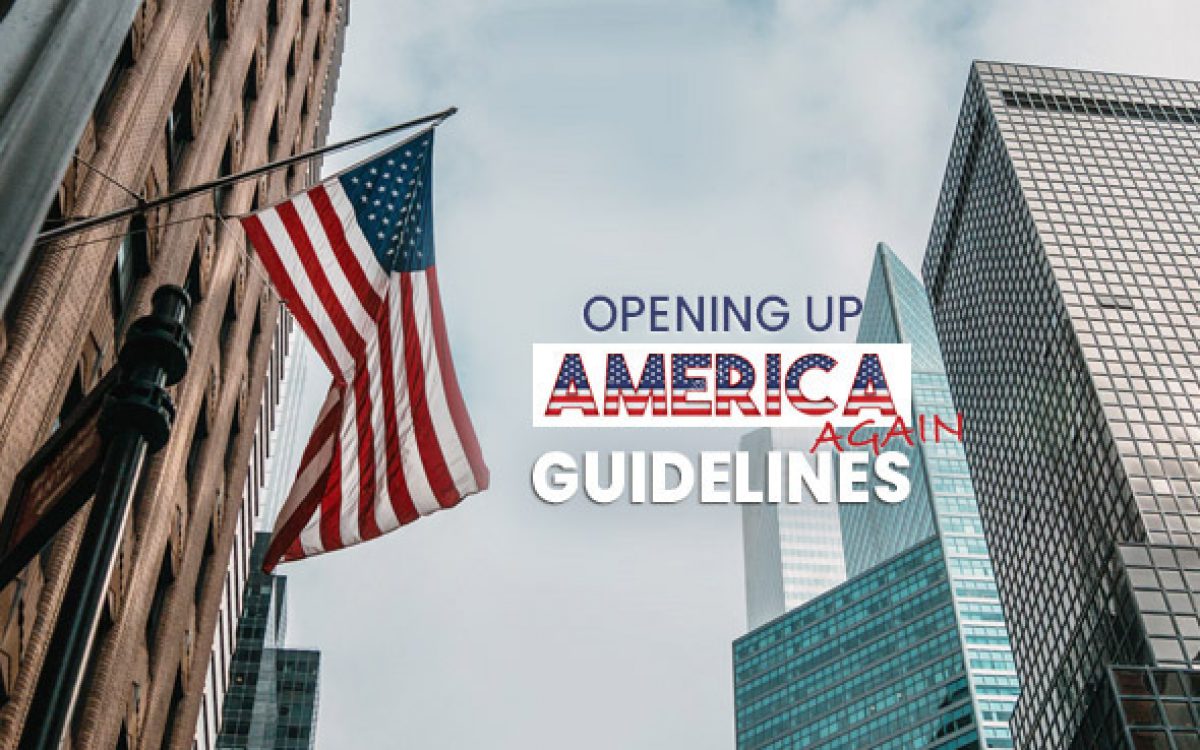On April 16, 2020, President Trump announced a plan entitled: “Opening Up America Again.” The plan offers a three-phased approach to state and local officials to reopen their economies and get employees back to work while continuing to protect Americans from the spread of COVID-19. During all three phases of the plan, the federal government recommends that each employer develop and implement appropriate workplace safety policies, continue to monitor employees for COVID-19 symptoms and develop and implement policies for workforce contact tracing following a positive COVID-19 test.
Before proceeding to Phase One of the plan, states and regions must be able to satisfy three (3) gaiting criteria:
- A downward trajectory of flu-like illnesses AND COVID-19 like cases within a fourteen (14) day period;
- A downward trajectory of documented COVID-19 cases within a fourteen (14) day period OR a downward trajectory of positive tests as a percent of total tests within a fourteen (14) day period; and
- Hospitals must be able to treat patients without crisis care AND have robust testing programs in place for at-risk healthcare workers, including emerging antibody testing.
Phase One
Individuals
Once states and regions have met the gaiting criteria above, they can proceed to Phase One of the plan. During Phase One, high-risk individuals (elderly individuals and those with serious underlying health conditions) should continue to shelter in place. Members of households with high-risk individuals must be aware that returning to work or other locations where social distancing is not possible may contract the virus and carry it home. Extra precautions should be taken to protect high-risk family members.
When in public, individuals should continue to practice social distancing and avoid public gatherings of more than ten (10) people unless precautionary measures are observed and limit non-essential travel. If travel is necessary, individuals should adhere to CDC guidelines regarding isolation following travel.
Employers
Employers should continue to encourage telecommuting in a manner that does not interrupt business operations. If possible, employers should allow employees to return to work in phases and special considerations should be made for high-risk employees. Common areas where gatherings are likely to occur should be closed and strict social distancing protocols should be implemented.
Under Phase One, specific employers such as schools, daycares and bars that are currently closed should remain closed. Senior living facilities and hospitals should continue to prohibit visitors. Large venues such as sit-down restaurants, movie theaters, sport venues and places of worship can reopen under strict social distancing protocols. Elective surgeries can resume on an outpatient basis.
States and regions with no evidence of a rebound during Phase One and can satisfy the gaiting criteria for a second time can proceed to Phase Two.
Phase Two
Individuals
During Phase Two, high-risk individuals should follow the same criteria as Phase One and continue to shelter in place. Special precautions should continue for those who live with high-risk individuals.
When in public, individuals should continue to practice social distancing and avoid public gatherings of more than fifty (50) people unless precautionary measures are observed and limit non-essential travel. Non-essential travel can resume.
Employers
Employers should continue to encourage telecommuting whenever feasible with business operations while continuing to consider special considerations for high-risk employees. Common areas where employees are likely to gather should remain closed unless moderate social distancing protocols are enforced. Businesses can resume non-essential travel.
Schools and organized youth activities can reopen during Phase Two. Large venues can operate under moderate social distancing protocols. Bars can reopen with diminished standing-room occupancy.
States and regions with no evidence of a rebound during Phase Two and can satisfy the gaiting criteria for a third time can proceed to Phase Three.
Phase Three
Individuals
High-risk individuals can resume public interactions but should continue to practice social distancing and minimize exposure to social settings where social distancing may not be observed. Low-risk individuals should minimize time spent in crowded environments where social distancing may not be observed.
Employers
During Phase Three, employers can resume unrestricted staffing of worksites. Specific types of employers such are large venues and places of worship can begin operating under limited social distancing protocols. Bars can increase standing-room occupancy where available.
States and Regions that fail to satisfy the gaiting criteria during any point of the three-phase plan may need to restart a phase or return to an earlier phase depending on the severity of the outbreak. Employers should continue to follow state and local guidelines when determining the most appropriate actions to take in order to ensure the safety of their workforce.
